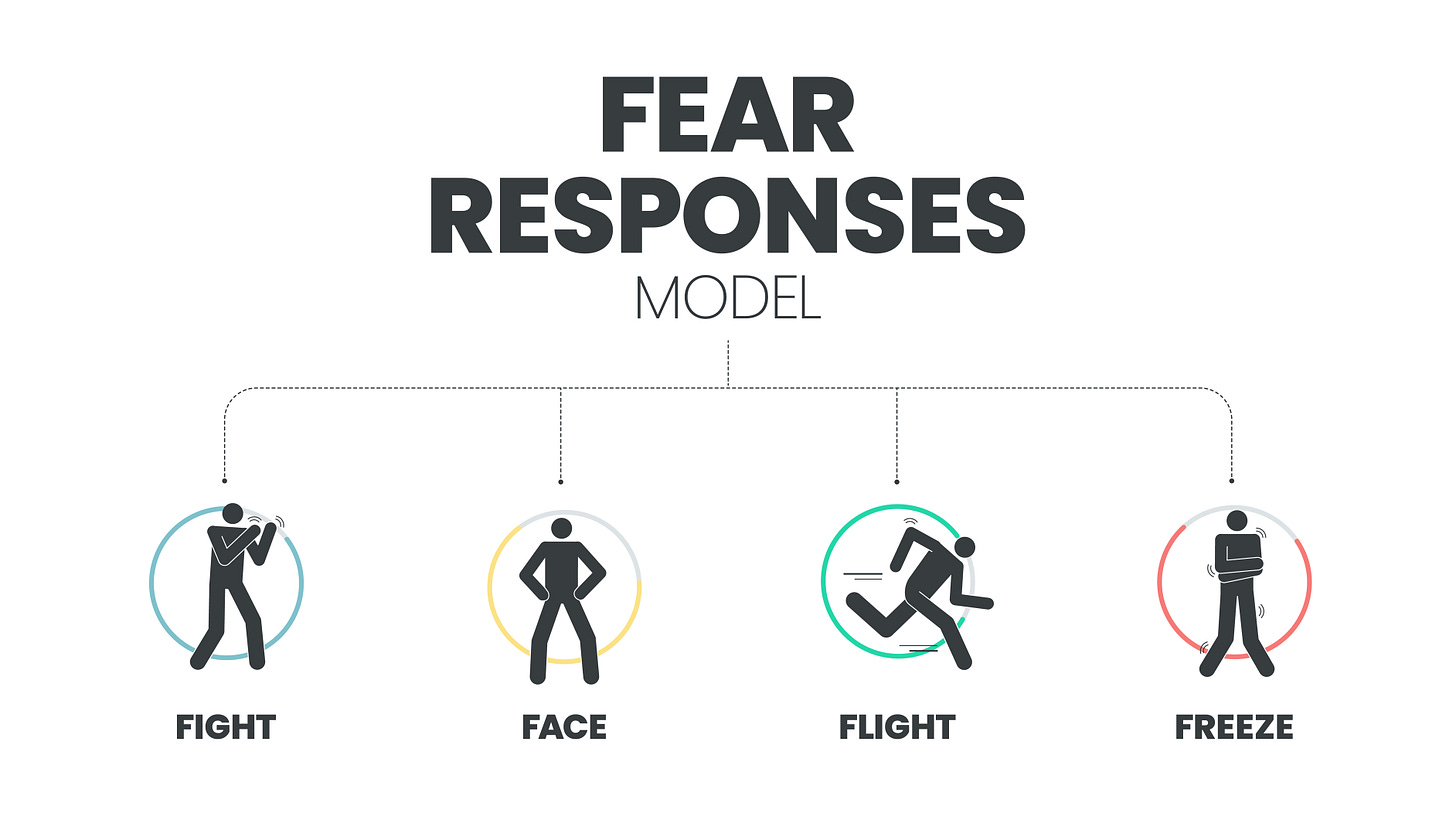Research Hit: Our "Fight or Flight Response" is Actually Very Refined
New brain scanning research shows that behavioural responses are situation dependent and much more nuanced than we may think
Wasn’t the fight or flight response always a massive simplification?
Yes, but it is overused in many contexts - we also know that it is at least four responses: fight, flight, freeze, or faint. But that is also a massive simplification.
How so, aren’t these basic behavioural models that have been with us for aeons?
Yes, this is the basic assumption: that we have a basic “approach” or “avoid” behavioural pattern. Approach the good stuff, and avoid the bad stuff and this fight or flight is the basic concept based on animal research. And hence in much literature this concept of fight or flight has taken a lot of space (more than it should do actually).
This is precisely what Samy Abdel-Ghaffar and colleagues of Trinity College Dublin the University of California Berkeley, and the University of Texas at Austin, wanted to explore in more detail and see what was happening in the brain.
And what is happening in the brain?
First, let’s understand how Abdel-Ghaffar et al. went about this. First they got participants to analyse 1620 pictures of everyday scenes. This was also to move out of lab settings: most research into these responses is based on very simple lab-based stimuli such as giving a mouse an electrical shock or being exposed to a larger more aggressive mouse.
These scenes, such as a couple hugging, an injured person in a hospital bed, a luxurious home, and an aggressive dog, were then categorised into positive, negative, or neutral. The emotional intensity was also rated.
A second group then picked what they thought were the best behavioural responses - so for example for an aggressive dog it could be stand your ground, move away quickly, or slowly retreat. You will notice that two of these are not traditionally considered a part of the “fight or flight” response: stand your ground, or move away slowly.
What they observed is that there were many behavioural responses not classically considered and much more nuanced than a 2-factor or even a 4 or 5-factor model.
Ok, and where does the brain come into this?
The viewing of the images was done in a brain scanner and this was then mapped to the behavioural patterns and images.
What was surprising was that they found that the visual centre of the brain also seems to store the emotional valence of the situation and hence predicts the behavioural response.
I thought emotionality was processed in different parts of the brain?
Yes, that is the standard assumption (that we have a visual centre and a separate emotional centre) but the brain is one whole interconnected unit. It kind of makes sense that the visual centre (in this particular case we are talking of the occipital temporal cortex or OTC) can also identify emotional salience - this is visual after all.
And what does this mean?
Well, what they saw is that (by using machine learning to identify patterns in the brain scanning data) how this visual and emotional data is saved and represented in the brain predicts what behaviour will come from this.
So, this means, we have much more nuanced models of how to respond in positive and negative situations and many of these are what we can call schema - behavioural responses to quite specific situations.
So it’s not just fight or flight!
No, it never was, it was always much more nuanced and very situational specific. This research shows how nuanced and situational it is.
But yes, we do have basic patterns that are common and are based on basic principles of approach and avoidance: get more of the good stuff and avoid the bad stuff, but we have many ways of doing this. Many are instinctive and many are learned.
But “fight or flight” is easier to remember!
Yes, that is the problem, and it is based on animal models and not human beings. We have many different models, which may include fight or flight. It is therefore better to think of situational approach or avoidance behaviours - but that may be too complex for a short YouTube video!
Which is back to the first rule of behaviour - humans are complex and individual!
Yes, indeed, and fascinating also!
Reference
Samy A. Abdel-Ghaffar, Alexander G. Huth, Mark D. Lescroart, et al.
Occipital-temporal cortical tuning to semantic and affective features of natural images predicts associated behavioral responses.
Nature Communications, 2024; 15 (1)
DOI: 10.1038/s41467-024-49073-8




